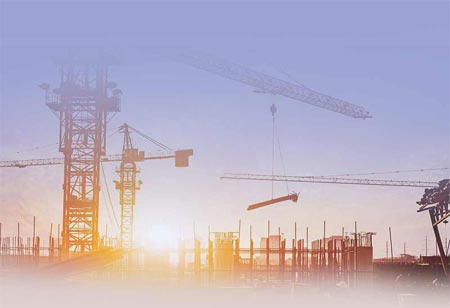Thank you for Subscribing to Construction Business Review Weekly Brief

The State of the Art in Precasting Technology
There's been an increase in users of technologically advanced concrete and construction technologies. Precast operations can be faster and safer with these solutions.
FREMONT, CA: Precast concrete manufacturing businesses number 1,939 in the US today—and that's been steady since 2017. The precast market will reach USD $168.17 billion by 2026 as companies try to cut costs, improve project timelines, and go green.
Precast concrete products are durable, functional, versatile, and can be made in any size and shape for ease of installation—offering a wide range of design possibilities, especially with technology. Technology advancements help manufacturers make products efficiently, effectively, and sustainably.
Advances in precast technology
Construction and concrete technologies, hardware, and software have become more critical on job sites. Precast manufacturers can speed up their operations and improve safety and sustainability with these solutions.
A Building Information Modeling tool combines digital technology, project management, design, and architecture, making it easier to build, manage, and design structures. Engineers, architects, and construction companies can work with this software, which collects and imports project data. Manufacturers can use BIM to model precast concrete walls and floors and place connections.
Real-time scanning helps track construction progress without visiting the site with virtual and augmented reality. Communication with all stakeholders improves, and productivity goes up. Precast manufacturers can better align concrete curing timelines with job site progress with this process.
3D printing is everywhere, from chocolate sculptures to housing structures. A 3D printer uses computer software to create layers of material that create precise dimensional structures. 3D printing is great for making reusable, durable formwork for precast concrete.
Humans can lift more with bionic exoskeletons, which work as extensions of their bodies. Humans can lift and carry heavy things easier this way. Exoskeletons are available as full-body suits or for specific areas, like upper bodies, lower bodies, and back braces. This reduces the risk of injury when doing repetitive work or heavy lifting, maximizing efficiency. Using this technology can boost productivity in any part of the construction process.
The most important thing is to improve site organization and safety. Precast manufacturers have a complicated process for loading, transporting, and placing panels. An efficient, safe way to move and install precast panels is with a lorry loader, like the Hiab Loader. In place of needing a crane or a second vehicle on-site to unload and install the sections, this crane can easily lift and move the panels.
Chameleon's retractable enclosures are great for indoor and outdoor curing, concrete production, aggregate storage, and dust control. Enclosures prevent product defects and shrinkage cracking by blocking weather conditions, containing humidity, controlling curing temperature, and preventing temperature gradients.
Dayton Superior's Delta Tie Insulation System is a nonconductive, noncorrosive fiber composite used for sandwich panel construction as a wythe connector. The product is a two-dimensional truss made from continuous wound fiberglass embedded in an alkali-resistant resin. Connectors made this way are robust and durable.
The CarbonCure Precast injects recycled CO2 into fresh concrete during mixing. Injecting CO2 causes a chemical reaction where it turns into a mineral. This technique will improve the concrete mix's compressive strength, reducing cement content without sacrificing strength.
The CarbonCure Precast plant installs a valve box and a control box. A valve box connects to a CO2 tank and delivers metered amounts of CO2. Using the Control Box, CarbonCure monitors the valve box system in real time and feeds usage data back to the customer portal.
With the Control Box, adding CO2 to a mix is like adding an admixture-it doesn't affect batching or loading.
With so many technologically advanced options available in the market, it's no wonder precast construction is growing in popularity. Precast concrete offers a lot of advantages over conventional materials like cast-in-place concrete. Precast concrete has the most significant advantage of speeding up the construction process. Builders used to pour concrete on the job site and wait several days or weeks for it to cure. Precast concrete lets them order ready-made products and install them as needed. There's no waiting period. Precast concrete structures are always in stock at reputable brands like Premier Precast. Precast concrete brands like Premier Precast use carefully selected materials in their mixes, like the ones above. These elements add strength, waterproofing, etc. Many of these materials are hard to get on-site and may be forgotten or overlooked. The strength of precast concrete is significantly higher than ordinary concrete. Manufacturing precast concrete occurs in facilities where the curing happens under close supervision. It's impossible to control environmental factors such as rain, humidity, heat, etc., when curing concrete at the construction site. Precast concrete manufacturers focus solely on creating concrete. As a result, there's a greater level of quality control. In large-scale projects, there is so much going on that no one can always keep an eye on quality control. Low quality and inconsistent construction can result. Construction projects need to be done fast. Labor and resource waste can add up daily—precast concrete speeds up the process so that builders can save money on labor.








